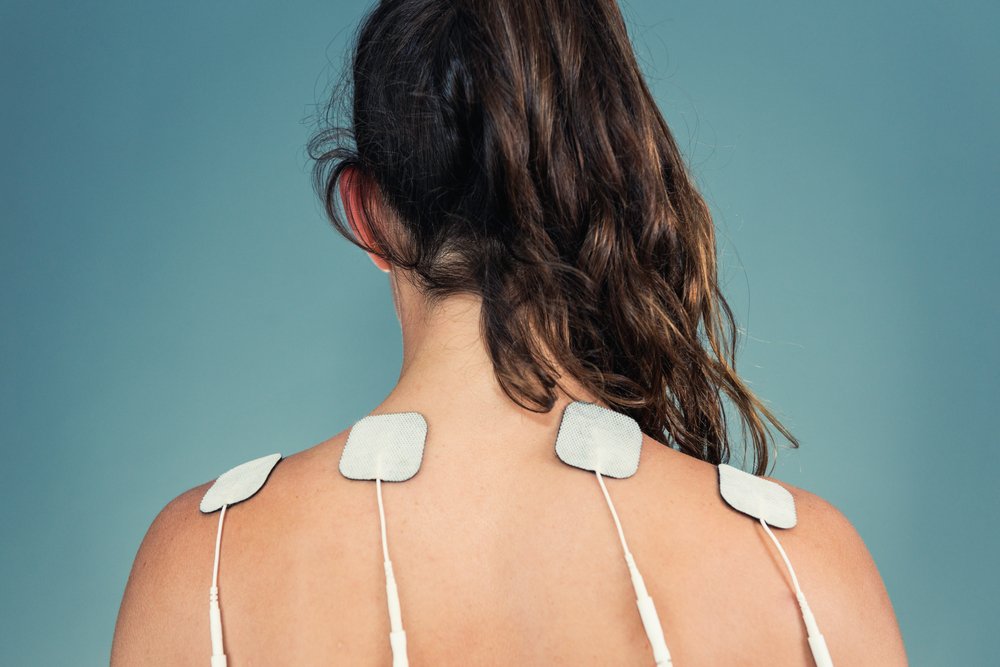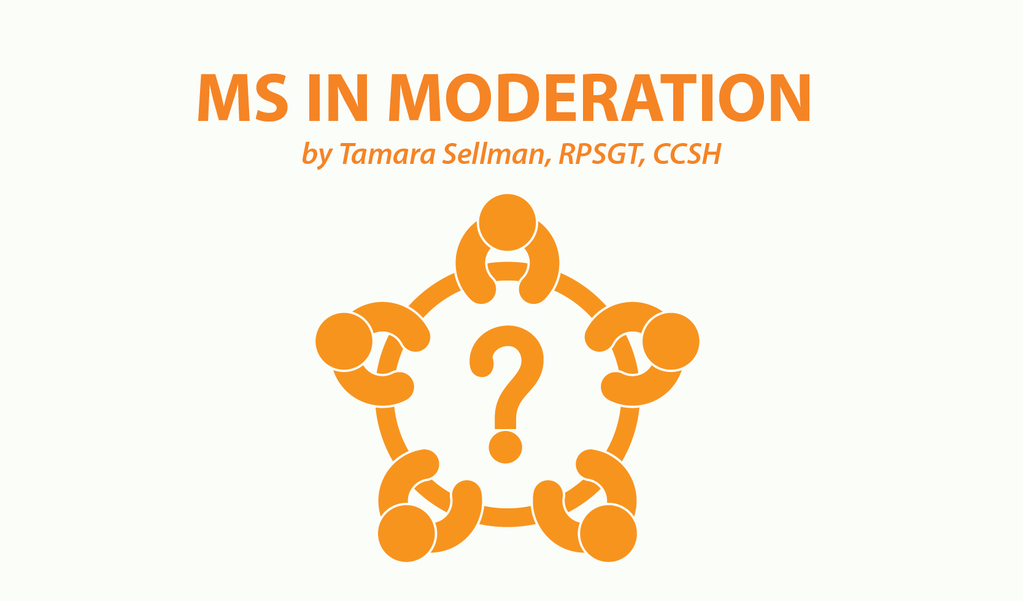Electric Stimulation as a Drug-Free Option for Managing MS Pain


One of the biggest ongoing threads we have in the forum I help admin revolves around the subject of pain.
We all know how pain can be disabling, or if not disabling, still influential over our moods, our ability to sleep, our energy levels, even the decisions we make. Pain is distracting, specific, invisible to others, and always an obstacle to normal living.
Some of my pain is related to MS (migraines, leg cramps, MS hugs, and L’Hermitte’s). However, most of my pain comes from the rheumatoid arthritis I’ve had my entire adult life. It’s there on a daily basis, affecting the body parts I use the most: my feet and hands.
Why not take aspirin, an NSAID, or other analgesic? As I age, I find it necessary to protect my liver; I take a DMT and know its potential for liver damage. I also take other medications that have no suitable drug-free alternatives. I would prefer to bust my arthritis pain by other means, if possible.
What is TENS?
I rediscovered TENS while at an event with a friend that had us sitting on bleachers for several hours. I noticed her using a device connected to a cable that had sensors she placed on her lower back. She told me it was a transcutaneous electric nerve stimulation (TENS) unit she’d picked up at a trade show a few years ago, and it did wonders for her back problems.
I briefly recalled using such a unit to alleviate lower back pain while in labor over 20 years ago. I never imagined it could be a therapy to treat muscle and joint pain independent of a clinical setting.
I checked online and, sure enough, I found a wide range of TENS units available between $20 and $200, no prescription needed. The one I selected was under $50 and came with additional electrodes and remote control.
How a TENS unit works
TENS delivers short bursts or patterns of electricity that safely stimulate the nerves.
This application of neurostimulation can reduce the pain signals delivered from the pain source to the central nervous system, which helps to relax muscles and provides pain relief.
The use of TENS also stimulates endorphin production: These are our natural pain relief hormones.
A TENS unit is typically composed of:
- a master handheld control
- one or two patches that are lined with adhesive gel to help conduct electricity
- cables or receiver units that snap onto the patches, then deliver electrical pulses
You apply the patches to your skin on areas where you experience pain. Then you connect the master control with the patches by snapping on cables or remote receiver units.
From the master handheld control, you can turn on the unit and set your therapy. Each unit is different, but they generally allow some range for adjustment so that you can set your treatment for the level of nerve stimulation you best tolerate.
TENS unit functionality varies widely, but the one I use offers patterns of stimulation that last about 30 minutes. Once the unit stops, I peel the electrode patch away, disassemble the unit, and I’m done.
I have been using my TENS unit about 4 times weekly for 6 weeks. I can say with confidence that for daily aches and pains in the muscles and joints, this therapy has made a difference.
What I’ve discovered:
- Relief is obvious, if temporary, in the areas where I’ve used the unit.
- The TENS unit does not fix the root cause of pain, but it can be used safely, day-to-day.
- TENS tends to make me sleepy (must be the endorphins), so I use it at bedtime to enjoy this secondary benefit.
If you decide to try TENS, please explicitly follow the directions that come with your unit. They pertain to electrode placement on the body. We’re talking about electrical currents, after all. Some places on the body should be avoided, such as near the heart and chest, neck, spine, or face.
***
Note: Multiple Sclerosis News Today is strictly a news and information website about the disease. It does not provide medical advice, diagnosis, or treatment. This content is not intended to be a substitute for professional medical advice, diagnosis, or treatment. Always seek the advice of your physician or other qualified health provider with any questions you may have regarding a medical condition. Never disregard professional medical advice or delay in seeking it because of something you have read on this website. The opinions expressed in this column are not those of Multiple Sclerosis News Today, or its parent company, Bionews Services, and are intended to spark discussion about issues pertaining to multiple sclerosis.







Carmen King
See? There wasn't enough electrodes to cover all the Pain I had and the moment I had to turn it off, the Pain came back in a minute. A doctor offered Spinal Cord Stimulator and fast forward, I have it implanted and it's always on and I can live a life of no pain.
Tamara Sellman
Hi Carmen
Thanks for sharing your experience.
Yes, for people who have ongoing pain that never goes away, a TENS unit is not going to do much. It's really better for temporary intermittent pain. The SCS is a good option but far more expensive and requires implant, so it would have to be something you need to go through your neuro to acquire. A TENS unit, however, can be purchased inexpensively from Walmart or Amazon and doesn't require a prescription. I think the pain experience each individual has should determine which way they should go. Either way, managing pain is super important, and if you can skip the meds to do so, even better.
Tamara
Kate Ewing Rose
Hi,
I have one of these machines but I'm partly afraid of using it, afraid of making my symptoms worse. Do you really think it is safe for people with MS? It is, as you say, electricity after all and what do our nerves do? Conduct electrical impulses. Just makes me a little afraid, though I wish that I weren't!
Tamara Sellman
Hi Kate
I totally get that. I was concerned too, but looked it up and found many of the MS supporting organizations also recommend it. Just follow the instructions and use common sense... don't place the electrodes near the heart or on the spine, for instance. I have found relief in my lower back, shoulder blade, hips, tops of my shoulders and wrists. Choose a unit that allows you to control the intensity of the therapy so you can be comfortable. It looks like they are all limited in intensity so as to not be dangerous (otherwise the FDA wouldn't approve them). I've used mine probably 40 times since I bought it; it was especially nice to have while flying and traveling.
Tamara
Kelly Chaney
I know this is years since this post and it was a very informative post. I have had my TENS for years also but I used it for just my lower back, and I have MS. I was just on the kitchen floor for a half hour with my MS HUG last night and I am definitely going to stick these things on there in just a few minutes with no fear in site. I've had MS for 31 yrs.
Tara P
Where do you place the pads during the MS hug please?
Philip Sypula
Thank You... Looks Like somthing I might try, Phil, to reduce the meds.
Tamara Sellman
Hi Phil, give it a try and let us know what you think!
Tamara
Lynda
I have been having severe pins and needle pain in feet from MS it helped when I put on support Sox Cooling pad that helped me go to sleep
today I got my Tens unit out to place on feet trying this this today
Tamara Sellman
hope it worked for you, Lynda!
Tamara
Kelly Haggart
Have you tried this on your feet yet Lynda? I'm anxious to get some feedback. I too have same symptoms.
Kelly
Judy
anyone know whats a good (brand)tens unit that is affordable that i can purchase through amazon?
Jeni Savage
What is the name of the electric machine?
Lynell Hiney
I've bought 4 online, all just for $20 ea. in the last 2 years. (I keep dropping them so they break and sometimes I use both at the same time - like for restless leg syndrome.) But I'm wondering about their lifespan, as the electrical pulses have started to feel like stings. I'm going to research their lifespan right now...at any rate, as much as I use them, it's worth the $20.
Linda Franks
I have been trying TENS. Unfortunately I find that it often triggers my pain rather than experiencing comfort & certainly no endorphins. My pain is usually in the thigh/knee area. I’ve tried both places, different modes ( message, acupuncture, cupping, etc) & different amount of pressure. I cannot seem to get relief. I keep trying.
Helene Sinclair
I get severe recurring pain in my left lower leg and foot at night, with a weird feeling of woodenness. I do not have any pain during the day but always have to consciously lift my left up when I walk.
Would a TENS machine help?
Tara P
I use my TENS 3-5 times a week for MS symptoms. It's especially helpful for headaches and random back pain.